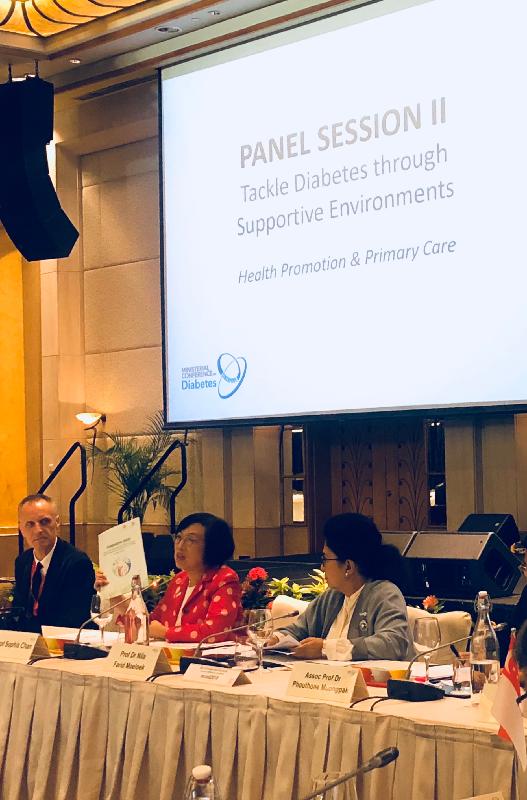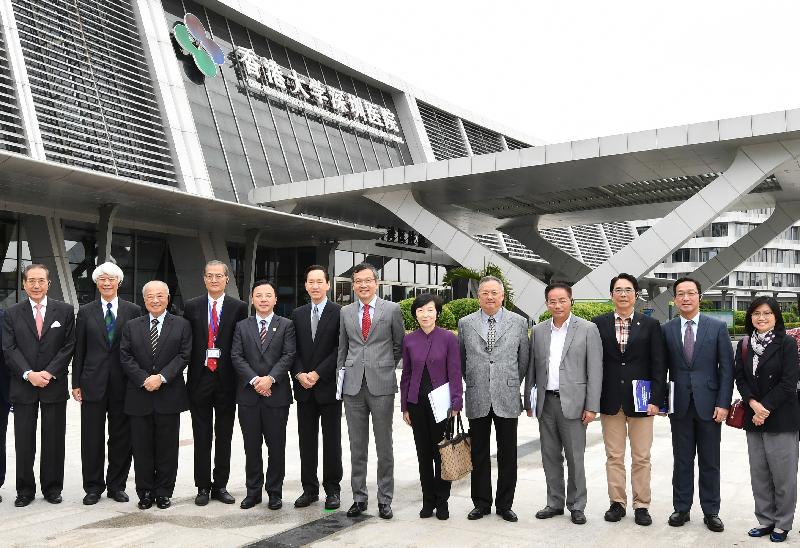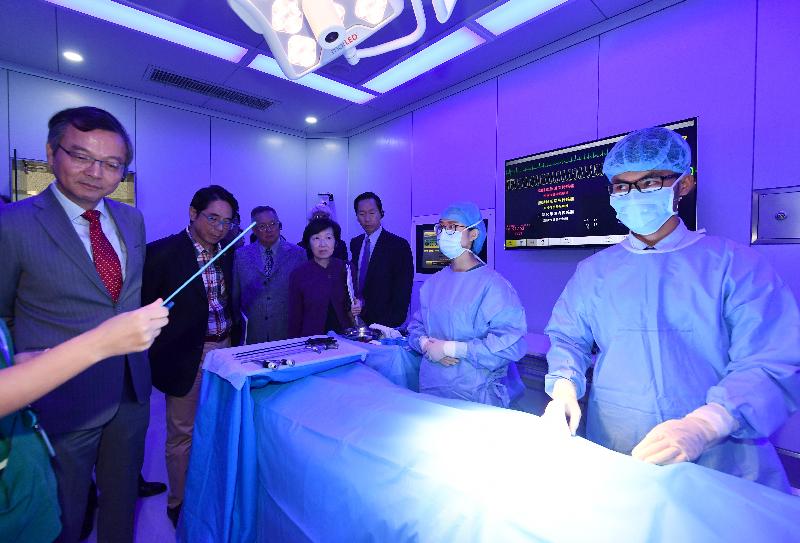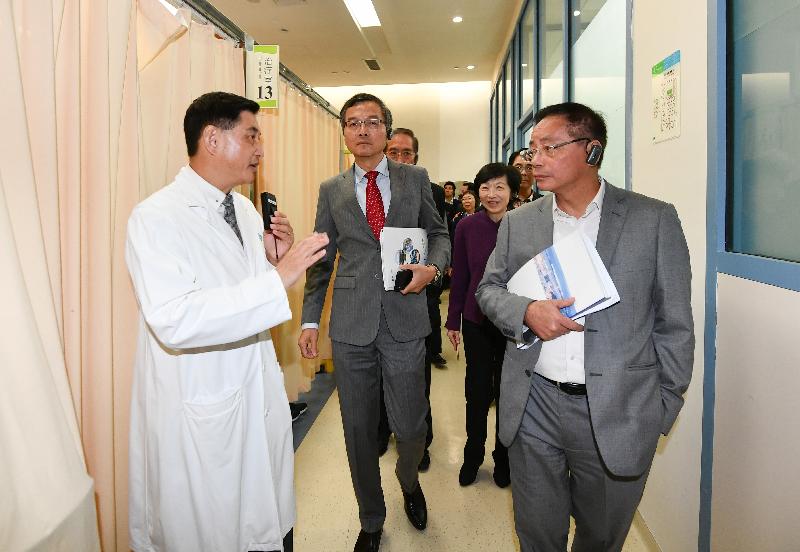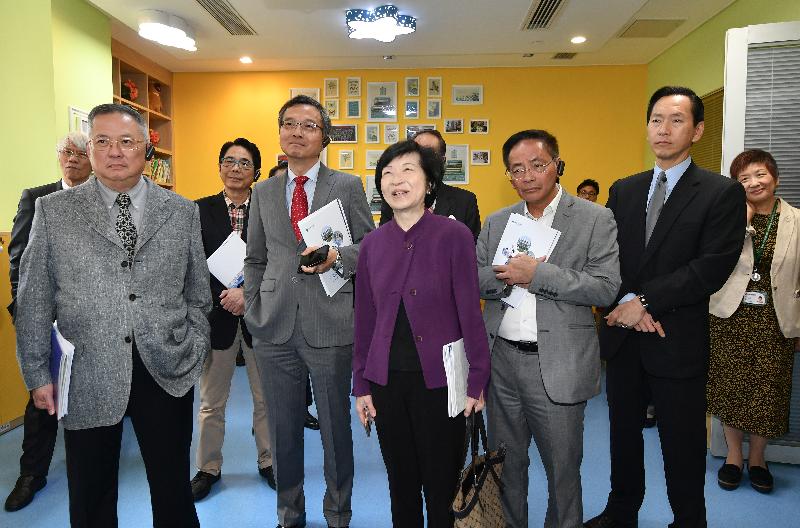Speech by SFH at Ministerial Conference on Diabetes – Tackling Diabetes through Supportive Environments: Health Promotion & Primary Care (English only) (with photos)
Following is the speech by the Secretary for Food and Health, Professor Sophia Chan, at the Ministerial Conference on Diabetes – Tackling Diabetes through Supportive Environments: Health Promotion & Primary Care today (November 26) in Singapore.
Minister Gan (Minister for Health, Singapore, Mr Gan Kim Yong), distinguished guests, ladies and gentlemen,
Good afternoon. It is my honour to attend this Conference and share with you Hong Kong’s experience on this important subject.
The Government of the Hong Kong Special Administrative Region is committed to safeguarding public health and reducing the burden of diabetes mellitus (diabetes) and other non-communicable diseases (NCDs). Driven by population ageing, and prevalence of unhealthy lifestyle, diabetes is becoming an important public health issue in Hong Kong. The latest territory-wide health survey suggests that some 8.4 per cent among those aged between 15 and 84 had diabetes, of which 50 per cent female and 57 per cent male were previously undiagnosed. We are seeing the famous “Rule of Half” here, that is, for every person known to be suffering from diabetes, at least one other person with the disease went undiagnosed and untreated. The number of diabetic patients in the Hospital Authority in 2016 is 462 000, representing an increase by 90 000 in total from 2012 to 2016, with an annual growth rate of 5.4 per cent. Patients aged 65 or above constituted more than half of the total number, and increased by an annual growth rate of 6.7 per cent during the same period.
Diabetes and other NCDs carry significant implications at both public health policy level and individual level. A high-level multidisciplinary and inter-sectoral Steering Committee on Prevention and Control of Non-communicable Diseases was set up to oversee the overall roadmap to combat NCDs. Taking reference from the World Health Organization’s Global Action Plan for the Prevention and Control of NCDs, we announced in May 2018 a strategic framework “Towards 2025: Strategy and Action Plan to Prevent and Control Non-communicable Diseases in Hong Kong”. It defines nine local targets to be achieved by 2025 and initiatives to introduce interventions throughout the course of life to help prevent occurrence and progress of NCDs. One of the targets is to halt the rise in diabetes and obesity. Other targets, such as reduction in insufficient physical activity, are also pertinent to the prevention and control of diabetes.
The risk of developing diabetes depends on a combination of host, environment and lifestyle factors. These risk factors are potentially modifiable by adopting healthy lifestyle including healthy eating. That said, given the paramount importance which Hong Kong people attach to food, the adoption of healthy eating is easier said than done in the gourmets’ paradise. The Committee on Reduction of Salt and Sugar in Food has been set up to steer and co-ordinate the work in reducing salt and sugar intake. We have been adopting a life-course and setting-based approach, with emphasis on alliance building, creation of a conducive environment, education and support, publicity, advocacy, research and evaluation. We have launched campaigns which aim to create supportive environments in schools, and target at school lunch suppliers and the catering industry. These campaigns transform schools into healthy settings for students to learn from a young age.
Strengthening the healthcare system particularly at the primary care level is another area we are working on to tackle diabetes and other NCDs. An evidence-based comprehensive care approach with greater emphasis on preventive care is necessary. We are setting up the pilot District Health Centre, which is a public-private partnership and district-based initiative to raise public awareness on personal health management, enhance disease prevention and strengthen medical and rehabilitation services in the community, thereby reducing unwarranted use of hospital services. We have developed the Hong Kong Reference Framework for Preventive Care in Primary Care Settings to provide common reference to primary health care professionals so to facilitate their provision of continuing, comprehensive and evidence-based care in the community. The Reference Framework elaborates on the important aspects of diabetes management, including prevention, early identification, complication monitoring, drug treatment, patient education and empowerment, etc. At our Research Office, we have accorded priority to give grants to studies on NCDs and primary care.
With our policies, efforts and substantial amount of resources on the prevention and control of diabetes and NCDs over the past decade, I am pleased to see that, overall, the risk of premature mortality from diabetes and other NCDs has been steadily decreasing over the past three decades. Yet given the increasing trend in the prevalence of diabetes and the large number of undiagnosed diabetic cases especially among the elders, we remain vigilant about the risk factors for NCDs taking a toll on our general population. I look forward to exchanging views with you in building a healthier community not only in Hong Kong, but also a healthier world for us and our next generations.
Thank you.



